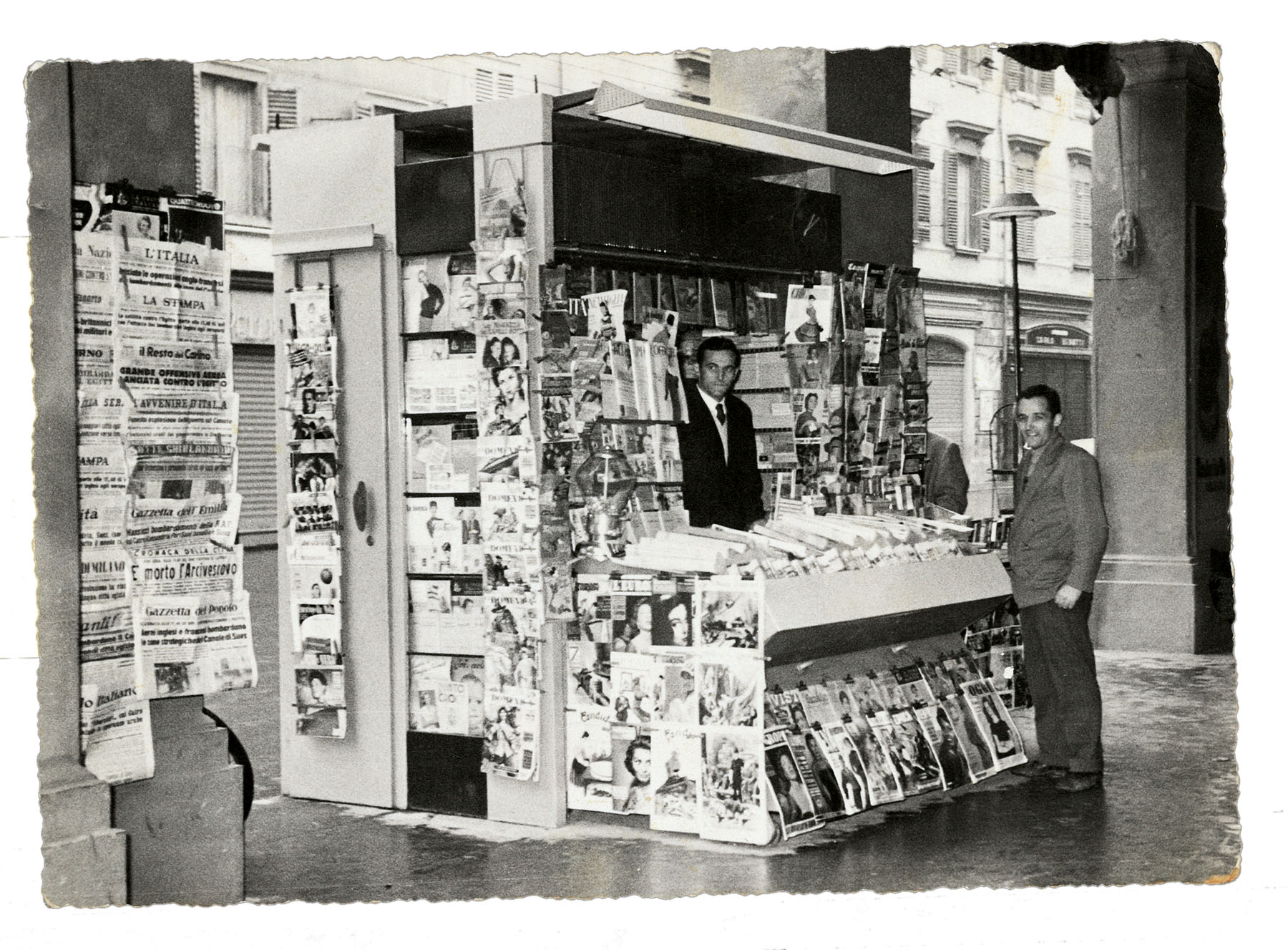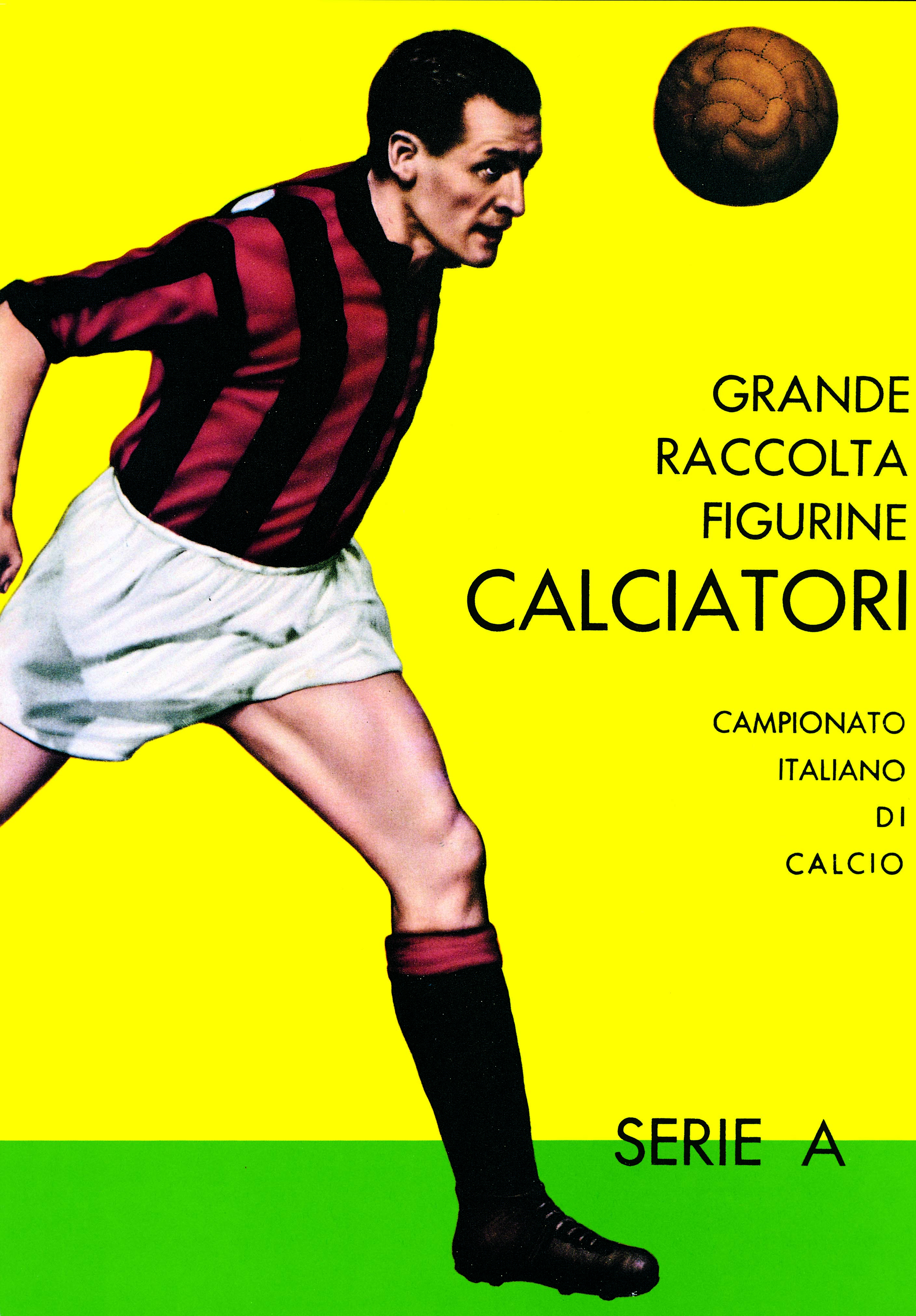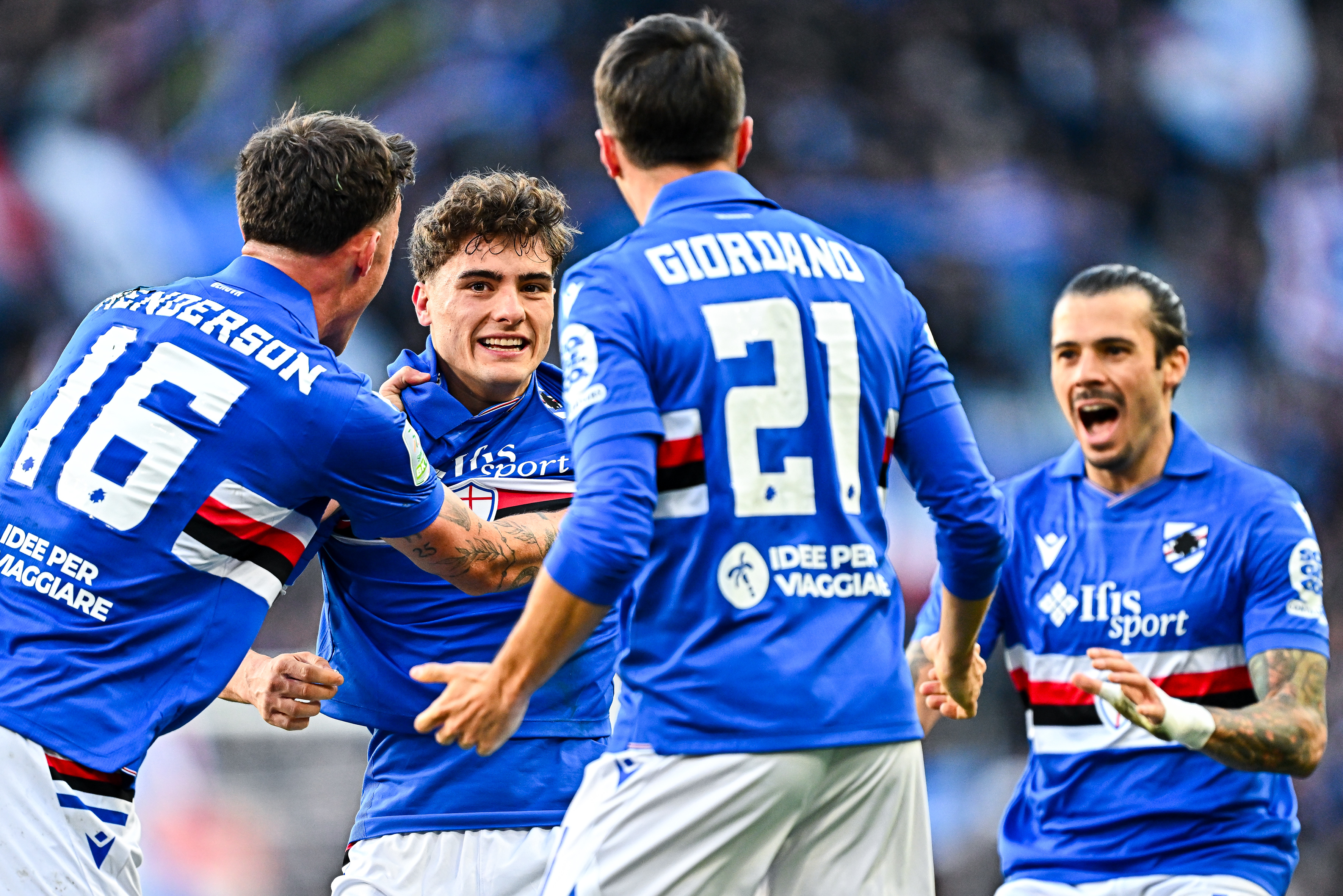
How Panini Went From Italian Institution to British Pop-Culture Hit via Swapsies and Shinies
By Dan Cancian
One of my most cherished possessions is a complete Italia ‘90 Panini World Cup sticker album. Or, to be precise, two albums.
The first has had each page meticulously cut out and placed into transparent punched plastic pockets, which are themselves filed away into one of those bulky folders that conjure pictures of American movies from the late 1980s.
As I was still four months short of my third birthday during Italia ‘90, all I know about the tournament is a sort of retroactive memory.
I don’t actually remember anything of it. I don’t remember my dad buying the sticker album, nor his horror when he saw me trying to rip it apart – which explains the filing folder and the fact he purchased a second copy.
I don’t remember him attending Brazil vs Scotland – I have reluctantly come to accept this as true, courtesy of grainy pictures he provided – nor him predicting West Germany would win on penalties before the semi-final had even kicked off.
But I have read and watched so much about Italia ‘90 since, that is almost as if my brain simply refuses to contemplate the fact I have learnt all that information afterward, rather than during the tournament.
What I distinctly remember is that that battered album is my earliest football memory from the moment it fell into my hands aged about four.
I obviously couldn’t read, but the pictures fascinated me as did the fact each player’s bio came with the clubs they represented.
The Brazil team that were knocked out in the last 16 are almost unanimously considered one of the most boring iterations of the Selecao in World Cup history.
To me, however, they were exotic, long before I even knew what the term meant. Similarly, I had never heard of Borussia Dortmund, Red Star Belgrade and PSV Eindhoven.
It was like being transported into a new world and, in many ways, at a time when the amount of football on TV was limited, albums were designed to do exactly that. From then on, the words swapsies – “double” stickers to swap with fellow collectors – and shinies – the stickers with a shiny background normally reserved for club badges – became an accepted part of my everyday vocabulary.
As it turns out, I’d simply walked down a well-trodden path.
One of the biggest British experts on football stickers, Greg Lansdowne has written extensively about the rise and impact of Panini in three separate books and he has his older brother to thank for lighting the proverbial fire.
“My older brother Billy had been a collector of football cards/stickers as a child but by the time I was getting into football he was part of West Ham’s first-team squad and he bought my first album for me,” Lansdowne tells Destination Calcio.
“My first album – Panini’s Football 79 – will always be the most special as it played a huge part in developing my love of football.
“With little televised football in those days, those stickers were our main outlet to discovering what many of the players we read about actually looked like.”
How Panini went from Modena to the world

The tradition of collecting the images of sports stars goes all the way back to the 19th century, when baseball cards were first produced in the US.
The phenomenon, however, did not take off in Europe until the early 1960s thanks to the efforts of the Panini brothers, Benito and Giuseppe.
The Panini family purchased a kiosk in 1945 in Modena, which evolved into a distribution agency in the following decade, before the first Calciatori (football players) collection was released in 1961.
It was a watershed moment for the company and for football as a whole.
In the intervening 60 years, Panini has expanded and diversified its business and is now present in over 150 countries with 12 subsidiaries and local distributors around the world, coordinated from the HQ in Modena.
As the company has grown, so has the number of tournaments and leagues it covers. The original Calciatori in 1961 covered Serie A and Serie B, but Panini now produces stickers for the FIFA World Cup, the European Championship, the Premier League and so on.
It is not just men who are represented either, with the growth of women’s football captured by stickers for the WSL in England, while the Women’s World Cup had its first dedicated album in 2011.
Back then, however, the stickers were only available in Germany, the host country. The 2022 European Championship and the World Cup the following year marked a significant shift in dynamic with wider releases.
And after 64 editions dedicated to the men’s game in Italy, this season marked the debut of Calciatrici – the first collection covering the 10 teams in Serie A Femminile, the women’s top flight.
With 322 stickers over 48 pages, the album is considerably smaller than its male counterpart, which comes in at a bumper 720 stickers over 119 pages.
In England, the Premier League album contains 636 stickers, while the WSL edition comes in at a more modest 397 stickers to collect with an extra 96 special stickers.
Last month, Gabriele Gravina, the president of the FIGC – the Italian FA – hailed the inaugural edition of the album dedicated to Serie A women as a “beautiful day for the entire Italian football movement, because it places the football played by women in a different and better perception.”
The first issue of Calciatrici also underlined Panini’s commitment to its roots.
Calcio remains one of the company’s pillars and not just for geographical reasons.
If one brand symbolises Italian football it is the iconic “flying player” that has been synonymous with Panini over the past six decades.

“The history of Panini began with the first Calciatori collection,” explains Antonio Allegra, the external relationships director at Panini’s Italian HQ.
“This is why Italian football – Serie A but also the other divisions – has been a milestone and continues to be an essential part of our business.”
The company sponsors the Man of the Match award presented at the end of each fixture and sticker books were distributed across Serie A and Serie B grounds in February.
The players did their bit too, exchanging special oversized stickers before kick-off along with the traditional pennants. But it is not only on the pitch that footballers get involved.
“Gianluigi Buffon is one of the keenest Panini sticker collectors among professional footballers,” explains Lansdowne. “So it is fitting that he has such an illustrious career in sticker form.”
Former Manchester United winger Ryan Giggs is a famous collector-turned-sticker himself, while Chelsea defender Tosin Adarabioyo regularly shares his passion for collecting on social media.
At times, stickers are simply required to win over skeptical young generations.
“A curious phenomenon is the interest that players and former players themselves show in their own stickers,” Allegra explains.
“We have received many requests from them or from their children and grandchildren, who asked for their stickers to recreate their careers for books or simply as a memento.
“I personally remember a former goalkeeper who played for Italy, and asked for his stickers to show his son that he had really been a professional footballer.”
Panini may have started in Italy, but the craze soon spread to Britain, where the company made its debut in 1970 with the World Cup album – the first of its kind.

A copy of the album sold for £2,400 at an auction in Leicester two years ago and a quick search on eBay reveals copies are available for eye-watering sums north of £8,000.
A Pele card was sold for $1m (£750,000) and Lansdowne predicts “it won’t be the last”, while three years ago a Diego Maradona sticker was auctioned for $555,960 (£429,300), the most ever paid for a football sticker.
It was a “rookie” sticker, as it marked the Argentine’s first appearance in a Panini album – the Calciatori 1979-80 edition, in which Maradona appeared in a world stars feature.
As with many other aspects of life, the global pandemic of 2020 was a game-changer for the industry from a financial perspective.
“In terms of the UK and Europe, it changed things as collectors from North America began to develop an interest in football cards and stickers to a much greater extent,” says Lansdowne.
“From that point on the price of certain collectibles has shot up to levels few can ever have imagined.”
How Panini became a pop-culture phenomenon in Britain
One of the factors that contributed to Panini’s meteoric rise was the mystique surrounding certain stickers, which were perceived to be rarer in packets than others.
“The reason why certain stickers appeared to be rare was because they rarely found their way to swaps piles,” Lansdowne continues.
“Eric Cantona was arguably the most popular player in the Premier League in 1995, so many who got his ‘double’ would have stuck it on a school folder – or just kept it – while anyone willing to swap would have known of the scarcity value so would have commanded an inordinate number of swaps in return.
“In the 1980s it was Liverpool stickers that were particularly rare as half of most classrooms, whether on Merseyside or Margate, seemed to be Liverpool fans at the time.”
Seven years after Panini’s arrival in Britain, the company launched the Euro Football album, which focused on the European Cup, UEFA Cup and Cup Winners’ Cup.
In 1978 came the launch of the first domestic album for English and Scottish clubs and there was no looking back.
According to Lansdowne’s chronicling of Panini’s World Cup Stickers: Panini Football Stickers – The Official Celebration, by the early 1980s Panini was the go-to brand for stickers for some nine out of every 10 UK schoolchildren.
Panini dominated the scene in Britain until 1991, but inexplicably no album was produced when the Premier League launched a year later.
Merlin, which was formed by four disgruntled former Panini employees with the help of then-Arsenal vice-chairman David Dein, filled the gap when it purchased the licence in 1994.
Panini eventually secured the licence in 2019, but will be replaced by Topps – its long-standing rival which was purchased by US-based Fanatics Collectibles – at the beginning of next season.
Panini, however, will always retain a special place in the heart of collectors.
“The dominant brand was Panini,” Lansdowne explains. “There were some alternative sticker albums/card collections during that time but Panini was by far and away the most popular.
“Panini’s collections had all the right players in all the latest kits – which you couldn’t really say for the rival efforts. There was no better way to chronicle a season than a Panini sticker album.”

Panini has changed with football
That may have been true for collectors, but as far as Panini was concerned the task of chronicling the season was particularly complicated at a time when different leagues operated different transfer windows.
In Italy, for example, the Calciomercato winter window would run between October 1 and December 1, while in England players could move clubs until March 31.
Different transfer windows meant different habits for collectors and Panini required several months of lead time to be ready for a January publication in the pre-internet days.
“In Spain, the La Liga sticker collection is normally released at the beginning of the season, with the summer transfer market still open, and further ‘waves’ of stickers are released on the market to cover the latest transfers and complete the album,” Allegra explains.
“On the contrary, in Italy, as well as in other European countries, the Calciatori collection has always been released at the end of December, to wait for the end of the old autumn transfer market, allowing us to offer fans a complete collection.”
Allegra admits FIFA’s decision to introduce a global transfer window over two decades significantly simplified Panini’s life, with the albums now scheduled for release at the end of December.
“We decided to keep the traditional release date but within the album we added spaces for the new transfer stickers,” he says.
“These are sold in ‘update sets’ after the end of the transfer window, so that at the end of the season, we have a collection with the club squads representing the entire season.”
If individual albums chronicled a season, taken together stickers book chart football’s evolution over the past five decades. The beautiful game has changed and Panini has had to change with it.
The 2025 Premier League album, for example, features each team in full, from squad shots and shirts to special stickers for Next Gen stars and Elite picks plus an array of infographics and stats.
It is a far cry from, say, the Football ‘86 edition, which contained just 16 stickers per team, including a shiny, a squad shot and the manager.
Similarly, where once the club’s info section contained little more than the names of the chairman, manager and club secretary and the ground capacity, it now features statistics to fill an Opta spreadsheet.
The Serie A version is similarly shiny and also features all 20 Serie B teams, plus squad shots and shinies for all 60 Serie C teams.
There are slots for new signings and even for mid-season competitions such as the Coppa Italia and the Supercoppa.
There are, to put it bluntly, a lot of stickers to go through and, in a sign of times, they can also be collected digitally.
“The way the new generations experience football is different and even Boomers, Gen X and millennials have changed their approach in the last decades,” explains Allegra.
“But Panini continues to evolve with generations. There are those who love the nostalgia and heritage of the Panini brand and continue to collect year after year, tournament after tournament, and there are others who are just beginning their collecting journey.”

If football is unrecognisable from what it was when the first Calciatori collection made its debut in 1961, the same can be said about the world as a whole.
The internet has dramatically changed the playing field, but Lansdowne believes it has had a positive impact.
“The internet has obviously opened up the possibilities to broaden one’s collecting horizons,” he explains.
“It has definitely done more good than harm because it makes it far easier to swap as we can now do it virtually.
“We can also share knowledge and grow the community more easily. “
And then there’s the financial consideration. Just like attending games itself, collecting stickers is no longer the affordable hobby it once was.
Back in 1978, a pack of four would cost 5p, while a single pack of the Calciatori collection – which contains seven stickers comes in at €1 (84p) in Italy and a box of 50 packets containing five stickers each for the WSL collection will set you back £45.
And yet, collectors keep coming. From kids following in their parents’ footsteps to old-timers for whom collecting is now a way of life, the “got, got, need” refrain remains as popular as ever.
“Sticker collecting never ends – there will always be more to get,” says Lansdowne.
“I would love to finish my Euro and World Cup albums from the 1980s but almost certainly never will because the value of some of the stickers has increased exponentially in recent years.
“If you’d told me in the 1980s that people would choose to keep their stickers loose – rather than stick them in the album – or that some would be worth hundreds of thousands of pounds, I would have found it very hard to believe.
“But this is now the reality and there are many upsides to these developments because the interest in the hobby is as buoyant as it has ever been.”
Now, if only I could find those Italia ‘90 swapsies.
Related Articles
Related Articles
The Serie B season reaches halfway when the action returns after the winter break, with more live matches to look forward to on DCTV.
Florence is a dream destination year-round, but visiting during the winter months offers a completely different and magical experience.
We get a local take on what's hot in Cremona - where to eat and drink, sights to see and handy hints that might not be in the tourist guides.




